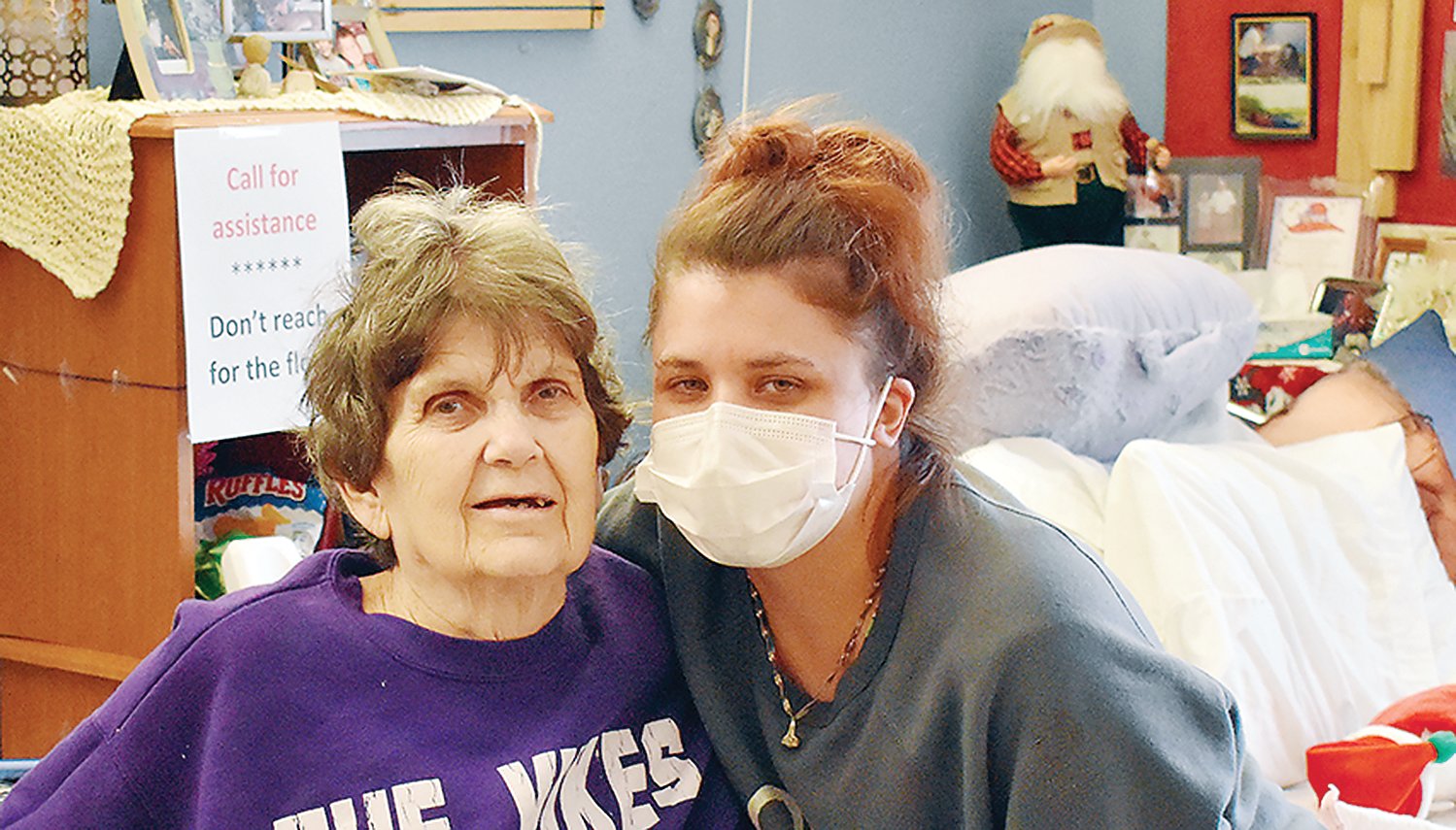Support the Timberjay by making a donation.
Care center seeks donations
Ely nursing facility facing challenges from vacancies, worker shortages
Every business owner knows that it doesn’t matter how many debts or assets you have. You must have cash on hand to meet expenses and pay the staff every month - or you shut your doors and go …
This item is available in full to subscribers.
Attention subscribers
To continue reading, you will need to either log in to your subscriber account, or purchase a new subscription.
If you are a current print subscriber, you can set up a free website account and connect your subscription to it by clicking here.
If you are a digital subscriber with an active, online-only subscription then you already have an account here. Just reset your password if you've not yet logged in to your account on this new site.
Otherwise, click here to view your options for subscribing.
Please log in to continue |
Care center seeks donations
Ely nursing facility facing challenges from vacancies, worker shortages

Every business owner knows that it doesn’t matter how many debts or assets you have. You must have cash on hand to meet expenses and pay the staff every month - or you shut your doors and go out of business.
The Boundary Waters Care Center is close to the edge of that cash liquidity cliff. BWCC anticipates an infusion of revenues from grants and the state of Minnesota in the latter half of the year. The nursing home will also be able to hire new staff for less money come August. Until then, the BWCC is letting the community know it could use some help.
Lower revenue, higher costs
Five factors are driving BWCC’s current money crunch: staffing costs, fewer residents, inflation, the government value-based funding formula, and the Minnesota Legislature.
“The last couple of years have been extremely difficult for BWCC’s finances. Lower census (the number of filled beds), along with a severe worker shortage have led to two straight years of losses for the facility,” said Adam Masloski, executive director of BWCC.
Several factors have contributed to BWCC’s negative margins. The first cause, price inflation for wages, equipment, and supplies, is obvious.
Another piece of the funding gap is due to the unintended effect that the COVID-19 pandemic has on the current funding formula for Medicaid. Masloski outlined how long-term care facilities like BWCC are currently funded through, “a value-based payment system in which our Medicaid reimbursements are based on our spending from prior years. That worked out pretty good for a while, but … now we’re being reimbursed based on what we spent almost two years ago.”
BWCC once filled nearly all 42 beds, averaging 38 to 39 residents before the pandemic. Since the arrival of the COVID-19, the number of filled beds dropped. “Throughout the pandemic, we’ve averaged more like 30 beds,” said Masloski. Reimbursement based on 30 beds is a reduction compared to pre-pandemic revenues which paid for pre-inflation expenses.
Another factor affecting BWCC is what didn’t happen in the Legislature last year. “In Minnesota,” Masloski stated, “they pass a bill related to health and human services every year. That bill stalled out last year and they ended the session without doing anything.”
With a state budget surplus and the Democratic majorities in both Legislature chambers this year, “something should get passed … They’re looking at funding for (nursing home) wages,” Masloski remarked.
The struggle for staff
Funding for wages is critical for BWCC. “We compete with the hospital. It’s kind of like chasing your tail for staffing. They raise wages and attract nurses and we try and keep up but, typically, nursing homes don’t have the ability to pay the rates that hospitals do.”
BWCC is short on nursing and other allied health staff like certified nursing assistants. The problem is state-wide, with over 20,000 job openings for Minnesota long-term care facilities.
Because of the lack of staff, BWCC has had to hire traveling nurses and other staff to fill the vacancies. “We’ve had to rely on a lot of agency staffing … That’s not sustainable for a small place like us,” Masloski said. Traveling staff cost more than permanent local employees. It’s a cost which isn’t currently accounted for in the reimbursement formula based on BWCC’s expenses from almost two years ago.
Masloski has taken several measures already to address the revenue and staffing problems. “We operate with a couple nurses on the floor and several certified nursing assistants that do the hands-on resident care and that’s where we struggle the most staffing wise.” To address that staffing need, Masloski said, “We’ve hired a nurse educator who can do CNA training on site.” This allows BWCC to hire new employees and train them for their CNA on the job.
Masloski has also been working with a firm that brings nursing staff from other countries to work in the U.S. Participants agree to work for a wage that is more affordable to the facility for a period of three years. In exchange, the facility pays all the immigration and visa fees, as well as sponsoring the workers to work here.
Unfortunately for BWCC, there’s a catch: “We won’t actually see them here in the building until August,” Masloski stated, so BWCC has several more months where it will need to pay for costly traveling nursing staff.
Needing a hand
Though it started out as part of the local hospital, BWCC has been a stand-alone independent 501(c)3 nonprofit with its own board of directors since 2011. When BWCC was still part of Ely-Bloomenson Community Hospital, it received support provided through the Ely Health and Hospital Foundation.
Even after the BWCC split off, the foundation provided the nursing home with financial assistance when it encountered previous difficulties. We were in a similar boat about seven or eight years ago, where finances were stretched pretty thin,” said Masloski. “At the time, a couple of things saved the facility.” Along with some help from the Minnesota Legislature which passed some now-expired funding for rural nursing homes, “We got some money through loans and grants through the Ely Health Foundation.”
Now that BWCC is looking at another financial crunch, the BWCC board decided at its November meeting to ask for help from the community. BWCC is looking for donations to get it over the current hump until new projected revenues and more affordable nursing staff become available late this summer.
BWCC has already sent out over 7,000 letters to the residents of the greater Ely area. The nursing home is also pursuing any help it can find to get through the next several months. For example, Masloski spoke to the Ely City Council on at their Jan. 17 meeting, telling them, “I’m concerned that we might not make it to that funding” that he anticipates will be available later this year.
He urged city officials to use their influence with legislators, “If any of you have any resources you can reach out to at the Capitol, I would very much appreciate you reaching out to them and asking them to support anything that includes long term care.”
Masloski also will be pursuing all the local and regional charities, nonprofits, foundations and businesses for any aid they can provide to get the nursing home the aid it needs until the projected funding is available.
The consequences
of closing
BWCC currently provides long-term care for residents no longer able to care for themselves. The facility also provides live-in rehabilitation services to those for whom outpatient rehab is not enough. It serves approximately 200 residents and rehab patients every year.
The rehab services are those usually available at specialty rehabilitation hospitals in urban centers. “Rehab is a big part of our business plan,” Masloski remarked, noting that if BWCC closed, its rehab clients would have to travel perhaps more than just 50 miles to get the care they need.
BWCC employs 50 staff, which makes it a major employer in the Ely area. The impact on the community if those jobs were lost would be significant.
The bigger loss would be the community connection. Most of the residents at BWCC have lived in Ely most of their lives. They have family and friends in the community.
“I’ve seen people come to visit family members living here at lunch time and stay until after supper,” said Kyle Stella, a recreational therapist who has worked at BWCC for the last 20 years. It would very sad if we closed. People would have to travel far just to visit, more than an hour.”
The community connection that would be lost if BWCC closed was perhaps best illustrated by resident Linda Williams, age 81, who has lived in Ely all her life. Alicia Cole, one of the CNAs at BWCC is her granddaughter.
“I love having her here,” said Cole, whose local Ely job at BWCC means she gets to see her grandmother every day at work.
Another resident at BWCC is Mary Ellen Gotchnik, age 87. “I have no idea where I would go if this place closed,” she said. Gotchnik has been at BWCC for three years. One of her sons, Gary, lives in the area and frequently visits her. “The maintenance here is good and they keep things clean. The food here is pretty good and I’m very critical since I’m a gourmet cook.”
Gotchnik stated that if BWCC closed, “I have an option to go to a nursing home near Cloquet,” south of Duluth, where another of her sons’ lives. That would take her away from Ely, where she has lived her whole life so far.
“Our residents, they become your family,” said Stella, which sums up the importance of a skilled nursing facility to a local community.
Most of the nursing home’s referrals for both long-term care and rehab are through the Ely-Bloomenson Community Hospital, with whom it shares a building.
The next nearest long-term care facilities are 50 or more miles away in places like Virginia or Aurora.






